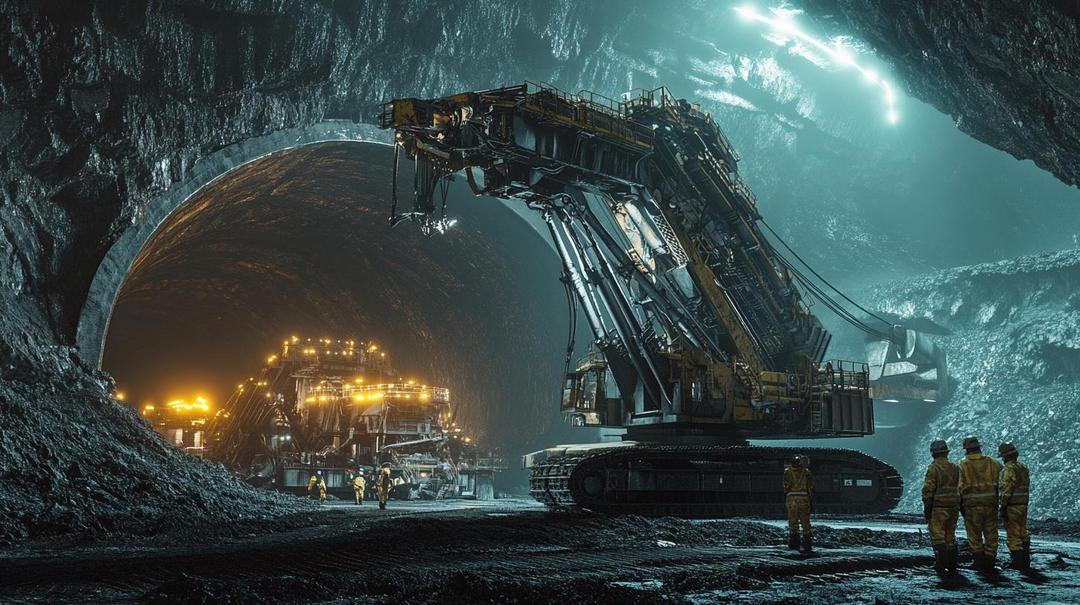The United States has long relied on foreign sources—especially China—for its supply of essential minerals that power everything from smartphones to fighter jets. As global tensions rise (and are aggravated by imposed tariffs), ensuring a secure and diversified (and maybe even a more domestic) rare earth supply chain has become a national priority.
Let’s dig in.
What's Inside
Why Are US Partnerships in Rare Earth Supply Chains Critical?
Rare earth elements (REEs) are the hidden heroes of modern technology. These special metals are crucial for everything from smartphones and electric vehicles to advanced military equipment and renewable energy systems. Despite their importance, the United States currently depends heavily on China for processing these critical materials.
The Strategic Importance of Rare Earths
The global technology landscape is increasingly dependent on rare earth elements. These metals are essential for creating powerful magnets used in wind turbines, electric motors, and advanced defense systems. A single smartphone can contain multiple rare earth elements, making them indispensable to our daily technological ecosystem.
China currently dominates the rare earth market, controlling over 60% of global production and processing. This concentration of power creates significant risks for countries like the United States, which rely on these materials for technological innovation and national security.
Key US Partnerships in Rare Earth Supply Chains
The United States is actively working to diversify its rare earth supply chain through strategic international partnerships. Countries like Australia and Canada have emerged as critical allies in this effort.
Australian Collaboration
Australia is a key partner, boasting significant rare earth reserves and advanced refining capabilities. The country’s stable political environment and robust mining infrastructure make it an ideal alternative to Chinese suppliers.
North American and European Partnerships
Canada is rapidly developing its rare earth mining and processing capabilities, while the European Union is investing in collaborative efforts to build a more diverse rare earth economy. These partnerships aim to reduce global dependency on a single source of these critical materials.
Challenges in Securing a Stable Rare Earth Supply
Developing a robust rare earth supply chain is not without obstacles. Environmental regulations, high production costs, and complex processing requirements present significant challenges for new mining and refining projects.
Environmental and Economic Barriers
Rare earth mining can be environmentally intensive, requiring sophisticated extraction and processing techniques. The high initial investment and complex regulatory landscape make it difficult for new players to enter the market.
US Policy and Investment in Rare Earth Supply Chains
Recent US legislation, including the CHIPS and Science Act (opens in a new tab) and the Inflation Reduction Act (opens in a new tab), demonstrates a commitment to securing domestic rare earth capabilities. The federal government provides funding and incentives for rare earth mining and processing projects.
Government and Private Sector Collaboration
The Department of Defense and Department of Energy are playing crucial roles in developing secure supply chains. Public-private partnerships are emerging as a key strategy for building domestic rare earth processing capabilities.
The Future of US Rare Earth Collaborations
Emerging technologies like rare earth recycling and the development of alternative materials offer promising solutions to current supply chain challenges. As diplomatic and trade agreements evolve, the rare earth market continues to transform.
Technological Innovation
Recycling technologies and the exploration of alternative materials could significantly reduce dependence on traditional mining and processing methods. Businesses and investors are closely watching these developments, recognizing the potential for innovation in this critical sector.
Conclusion
The US faces significant challenges in securing its rare earth supply chains, but strategic partnerships with allies offer a path forward. By investing in domestic mining, refining, and alternative solutions, the US can reduce dependency on China while strengthening economic and national security. As global demand for REEs grows, businesses, policymakers, and investors must closely monitor these evolving partnerships and their impact on international trade.
FAQs
Why does the US rely on China for rare earth elements?
China has historically dominated rare earth mining and refining due to lower production costs, significant reserves, and government-backed investment in the sector. The US once led in rare earth production but lost ground after environmental regulations and economic factors made domestic mining less competitive.
How is the US reducing its dependence on China for rare earth materials?
The US is securing partnerships with countries like Australia, Canada, and Japan, investing in domestic mining and refining infrastructure, and funding research into alternative materials and recycling technologies.
Which countries are the biggest producers of rare earth elements?
China leads global production, followed by the US, Australia, and Myanmar. The US is working to expand its production capacity through partnerships and domestic investments.
What industries are most affected by rare earth supply chain disruptions?
Defense, electronics, renewable energy (particularly wind and solar technology), and advanced manufacturing industries heavily rely on rare earth elements for essential components.
How do rare earth mining and refining impact the environment?
Rare earth mining generates toxic waste and requires extensive processing, leading to concerns over pollution. Efforts are underway to develop more sustainable methods, including recycling and alternative material innovations.


Dustin
Driven by a fascination with rare earth elements and their role in powering modern tech and engineering marvels. A true car and tech enthusiast, he loves exploring how these hidden heroes fuel our most exciting innovations.
You Might Also Like…